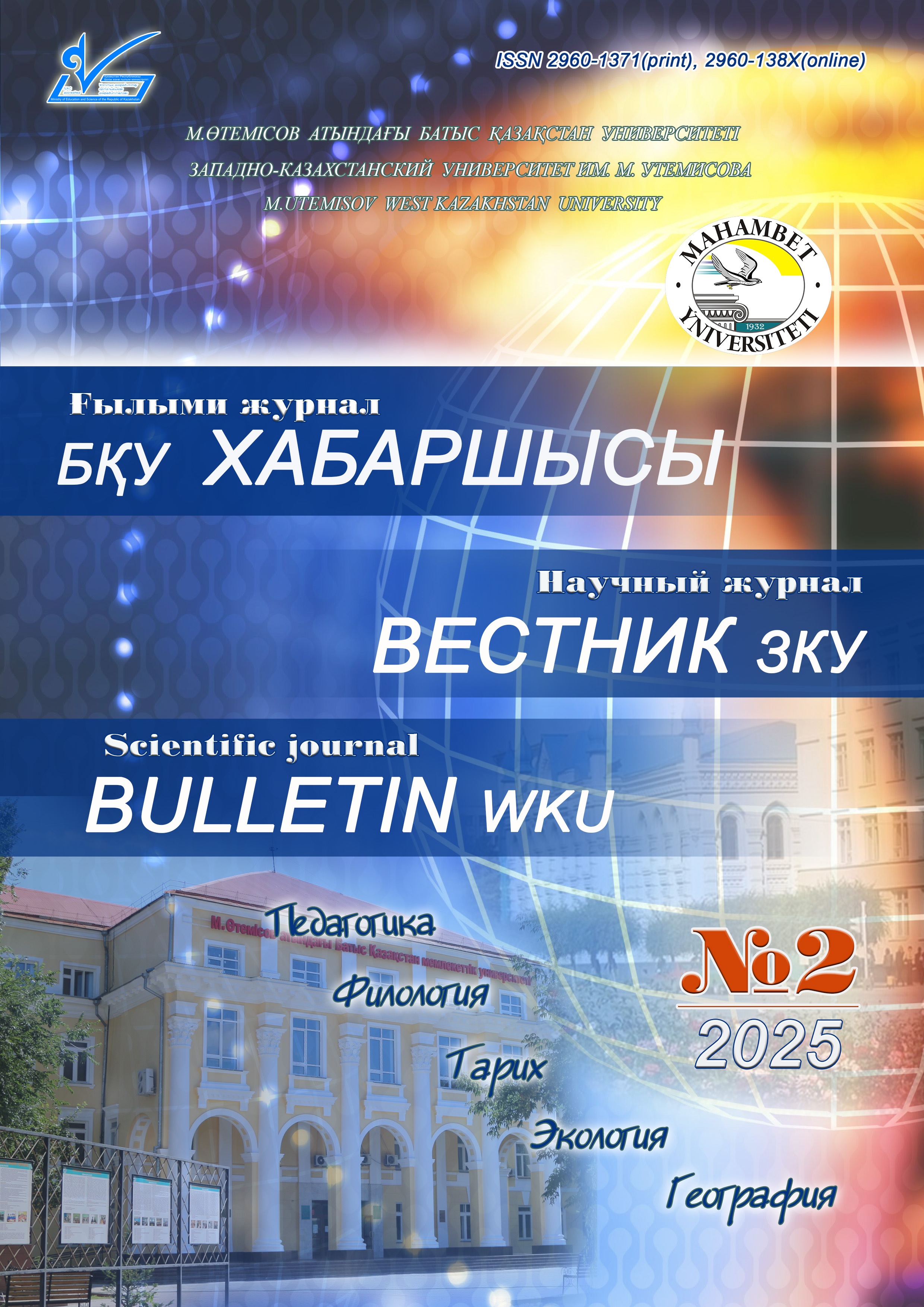ECOLOGICAL ASSESSMENT OF AEROTECHNOGENIC POLLUTION BY HEAVY METALS IN THE NORTH KAZAKHSTAN REGION
Abstract
This article presents an ecological assessment of air and soil pollution in the North Kazakhstan region caused by heavy metals. Modern analytical methods, including mapping, statistical data processing, and comparative analysis, were applied to evaluate contamination levels and their environmental impact. The study provides graphical and tabular data on pollutant concentrations, spatial distribution, and potential health risks for the local population.Environmental pollution by heavy metals is a pressing issue due to their persistence, bioaccumulation potential, and toxic effects on ecosystems and human health. The North Kazakhstan region is influenced by various anthropogenic factors, including industrial emissions, agricultural practices, and vehicular traffic, which contribute to atmospheric and soil contamination. Heavy metals such as lead (Pb), cadmium (Cd), zinc (Zn), nickel (Ni), and mercury (Hg) are released into the environment through industrial activities, transportation exhaust, and the application of agrochemicals. These pollutants settle into the soil, posing long-term risks to agricultural productivity, groundwater quality, and biodiversity.The research methodology involves field sampling, laboratory analysis, and geospatial assessment using GIS technologies to visualize contamination hotspots. Concentrations of heavy metals in air and soil were compared against national and international environmental safety standards to determine the extent of pollution. The study also assesses the ecological risks associated with metal contamination, focusing on their potential impact on human health. Chronic exposure to heavy metals can lead to serious health issues, including respiratory disorders, neurological impairments, and carcinogenic effects.The findings highlight the most affected areas and suggest measures to mitigate pollution, such as improved emission controls, sustainable land-use practices, and stricter environmental regulations. The study contributes to developing a framework for long-term monitoring and pollution management strategies to ensure ecological safety in the region.



